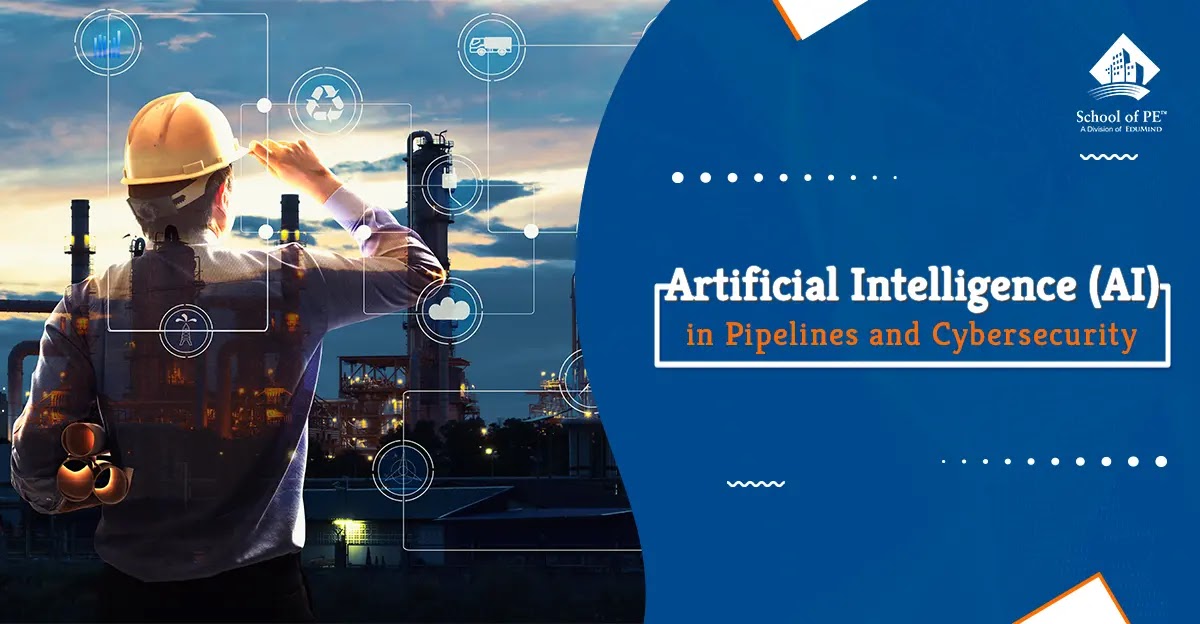The blog highlights:

1. Energy from Oil and Gas
Energy continues to be an ongoing topic in the world with issues such as sustainability, renewable energy, and climate change all playing a factor in economic and political decisions and policies. The oil and gas industry is hotly debated due to its potential environmental impact and geopolitical concerns, while still providing a viable source of energy to the world economy. Due to these factors, there is continuous innovation for new technologies to improve efficiency, mitigate environmental impact, and ensure safety for both workers and communities.
2. The Oil and Gas Industry and Artificial Intelligence
Artificial Intelligence (AI) is being developed for numerous oil and gas industry factors, including pipeline data, satellite imaging, component operating parameters, emissions standards, and production costs. The field of materials science is based on applied chemistry, and pipeline features such as tensile strength and longevity can be estimated based on chemical composition. AI can also evaluate equipment performance and measure pipeline integrity to detect potential threats and failure probabilities before actual damage occurs to both human life and property. Digital technologies that can rearrange data sets and optimize production have the potential to become a billion-dollar market.
3. Reducing Production Cost and Increasing Recovery Rate
Technological advances such as AI help reduce production costs and increase oil/gas recovery rates in the upstream phase of exploration and production (E&P). The potential for AI also increases competition among oil and gas companies that are seeking to profit from the advanced technology by increasing their sales and product extraction efficiency. AI presents opportunities for economic development and partnerships with regulatory agencies in the United States and abroad. Natural gas tends to be more domestic since it can be obtained within existing land and provided through interstate transmission and intrastate distribution pipeline networks. The Pipeline and Hazardous Materials Safety Administration (PHMSA) is a regulatory body under the United States Department of Transportation (DOT) that is responsible for regulating the nation's pipeline infrastructure.
4. Quality Control
AI use in pipelines and partnerships with PHMSA can also help improve reliability of leak detection systems and integrity management of aging pipelines. Non-Destructive Testing (NDT) can be utilized to detect anomalies (e.g., gouges, defects) in pipelines using inline inspection (ILI) data. Drones, robotics, and sensors are all instruments that can collect large data sets remotely in the field without requiring human interaction, saving on both costs and worker hours. Methane detection is becoming more prominent in the oil and gas industry to mitigate emissions that could have environmental impact. Combustible Gas Indicators (CGIs) are used to measure gas/air mixtures that can determine potentially hazardous areas that are within the ignitable range between the lower explosive limit (LEL) and upper explosive limit (UEL). In addition to methane (CH4), these instruments can be calibrated for other hydrocarbon gases (e.g., propane, C3H8). AI can ensure overall quality assurance (QA) in all pipeline aspects, including safety, analytics, E&P, and reduced costs, while also accelerating processes for faster delivery and quicker response times in the event of an incident.
5. Improving Pipeline Cybersecurity
AI can also help improve pipeline cybersecurity. With ransomware attacks becoming more apparent in oil and gas as well as other industries, the Transportation Security Administration (TSA) issued two Security Directives for mandatory oversight and reporting obligations applicable to pipeline operators. The First Directive involves reviewing pipeline security plans and inspecting critical facilities that may be compromised by a cyberattack. The Second Directive involves implementing specific mitigation measures to prevent ransomware attacks as well as developing cybersecurity recovery plans in the event of a cybersecurity breach. AI is looking to be at the forefront of these initiatives as technology continues to grow worldwide.
Conclusion
Be sure to continue checking back with School of PE for future blog posts; the engineering industry is always growing and achieving a professional engineering (PE) license will help you grow personally and professionally as you progress in both your career and the industry.
Do you have goals of becoming a professional engineer? School of PE offers PE exam review courses for numerous engineering disciplines! Sign up today.
No comments :
Post a Comment